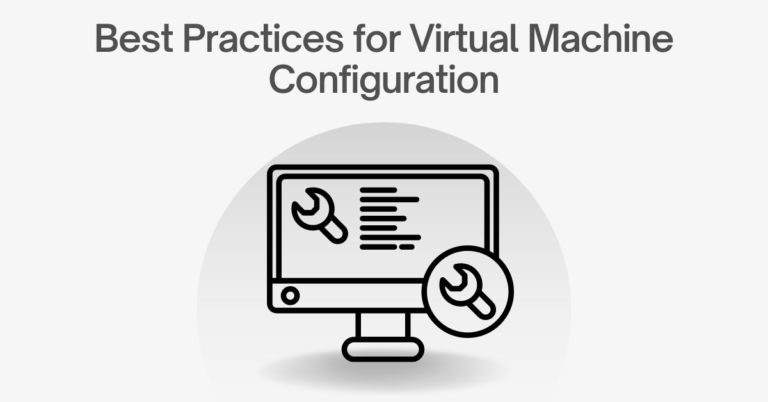The reliability and functionality of dedicated hosting services are appropriate for some websites, but this service’s costs and maintenance needs might be insurmountable. Nevertheless, inexpensive shared hosting is also not a choice. Perhaps the website has outgrown these basic plans, or a private server is required to separate the website from other users for performance and security concerns.
This is where hosting for Virtual Private Servers (VPS) comes in. If you’re searching for a web hosting solution between shared hosting and dedicated hosting, VPS hosting might be the way to go.
What is VPS?
In VPS hosting, one physical server is subdivided into numerous “virtual” servers, each of which may be utilized by a company to host its website.
According to Allied Market Research, the Virtual Private Server market was worth over USD 2 billion in 2018 and is expected to reach more than USD 8 billion in 2026, expanding at a compound annual rate of 16.2% between 2019 to 2026.
In contrast to a dedicated server, a virtual server shares its software and hardware resources with other users. Alternatively, it simulates the functionality of a dedicated server. Multiple virtual resources exist on the same server instead of a singular dedicated resource. The capacity to execute numerous operating systems and applications with minimal resources is the most significant advantage of virtual servers. In this virtual environment, administrators of websites can have many domain names, email administrators, document logs, IPs, and data analytics.
Furthermore, each server can separately manage security systems and credentials through root access. This feature enables you to administer your server. You can install and configure server-wide programs and edit any resource on the server. Many VPS hosting providers allow you to manage server resources, make efficient decisions, and have extensive control over the server environment.
How Does VPS Work?
Even though you still share the actual server with other customers, the best VPS provider replicates the functionality of a dedicated server.
Using virtualization technology, your web hosting company puts a virtual layer over the server’s operating system. This layer uses virtual walls to divide the server into discrete compartments, enabling each user to run their own operating system and software.
A VPS is a private server because it partitions your files from those of other users at the OS level. This indicates that your website is housed in a safe environment with guaranteed server resources, such as RAM, disk storage, and CPU cores. You are not required to distribute any of it to others.
Tips on Managing Hosting Services’ Virtual Servers
Virtualization, in the form of virtual servers, has become an essential component of IT infrastructure due to the transition to cloud service. Part of this is due to the high risk of consolidating applications on one physical server, which can harm the server and its network connection.
Virtual servers, like real servers, can fail. If this occurs, all your hosted business software will experience downtime, which can significantly impact your company, potentially resulting in monetary losses. According to an ITIC 2021 Global Server Hardware Server OS Reliability Report, for 91% of mid-sized and large businesses, one hour of server outage costs $300,000 or more. Additionally, 44% of the 91% majority of firms reported that hourly outage expenses exceed USD 1 million to USD 5 million.
To avoid such downtime, you must regularly monitor your whole IT infrastructure to maintain the functionality and stability of your virtual space.
Here are some best practices for monitoring and managing VPS.
1. Establish Performance Goals and Tasks
It is crucial to establish a baseline for each criterion of a virtual server setup; this is to ascertain the server’s overall health. Having a well-curated and mapped baseline with a predefined set of metrics will help your organization understand resource utilization and facilitate the setting of standards that can be looked back upon and compared.
If your IT team needs to gain complete visibility of every task, consider assessing the features of project management tools that can help your team’s performance. Project management tools enable firms to plan and schedule projects efficiently. Project management tools also allow managers to track the many KPIs that assure excellent project outcomes.
2. Utilize Automation for Monitoring and Management
By automating the monitoring and management of virtual servers, your organization may save time and focus on more important IT infrastructure issues at the team level.
Scalability frequently results in unanticipated costs once an IT administrator manually controls virtual servers. Applying templates to manage, configure, and distribute virtual servers to automate operations such as powering on/off VMs, restarting guest VMs, reloading the data center, resetting VMs, and placing VMs on standby will ease an IT administrator’s work.
3. Provide Equivalent Attention to Monitoring Non-Virtual and Virtual Server Traffic
Similar consideration should be given to virtual and non-virtual server traffic. On an institutional level, the greatest danger would be deprioritizing virtual host monitoring.
It is essential to monitor internal and external flow to your virtual servers to decide which machines require greater resources and which would perform better as standalone server machines.
4. Maintain Adequate Hardware Resources for Server Upgrades
The physical host server configuration is determined by the requirements and performance of the virtual server. The host should have enough hardware resources to allow the virtual servers to provide services without a problem. For VMs to operate services, these resources include specified CPU, memory, and storage.
5. Determine the Virtualization Benefits that Zombie VMs Can Nullify
VM Sprawl is primarily caused by zombie virtual machines, which can significantly impact the efficiency of the virtual servers. VM sprawl can potentially create security vulnerabilities.
Once Zombie virtual machines have been identified, it is better to decommission them entirely. The most effective method for combating zombie virtual machines is regularly monitoring your data center and virtual infrastructure.
The appropriate virtual server monitoring solution may help you establish a formal procedure for requesting and authorizing virtual server machines, record their lifecycle, and, most importantly, evaluate your virtual server resources use.
6. Stay Updated
Hackers are everywhere, searching for vulnerabilities. According to a study by Research and Markets, 90% of IT specialists are worried about their data security.
If your operating system is not up-to-date, you have a security hole. OS upgrades typically include patches for security vulnerabilities that you may have missed. It is possible that ignoring a patch will result in the server’s continued exposure. To remain fully protected, be sure to execute all of the security updates provided by your OS provider.
7. Develop A Solid IT Team and Invest in Solutions
Your IT department is the foundation of your organization. If they are not adequately taught or provided with the necessary tools, they will be incapable of addressing any concerns. Even if there is less to maintain in a virtual server, your personnel must still be prepared for any emergency or demand.
An advanced web-based resource management software solution, such as elapseit, can help your IT Team match their resources with upcoming needs and dynamic deadlines.
Familiarize your personnel with the technology and ensure they understand the best practices. This will guarantee that they will be able to resolve any issues before they impact the user experience. Fortunately, many VPS providers offer training materials, tools, affordable applications, and management services for virtual server administration. These tools will give you an overview of all the virtual servers you’re operating, enabling you to make decisions that will enhance your service. They will also aid in identifying problem areas, hence reducing the time required to remedy these concerns.
Effective Management of Virtual Private Server

Your host is the linchpin of your business, affecting everything from the speed at which your pages load to your resistance to security threats. The best VPS hosting provider offers many website owners the ideal balance of quality and price. You receive everything you would expect without spending money on dedicated hardware from an excellent hosting service. And the majority of providers give you a choice to move up to dedicated hosting without much difficulty if you ever need to upgrade.

